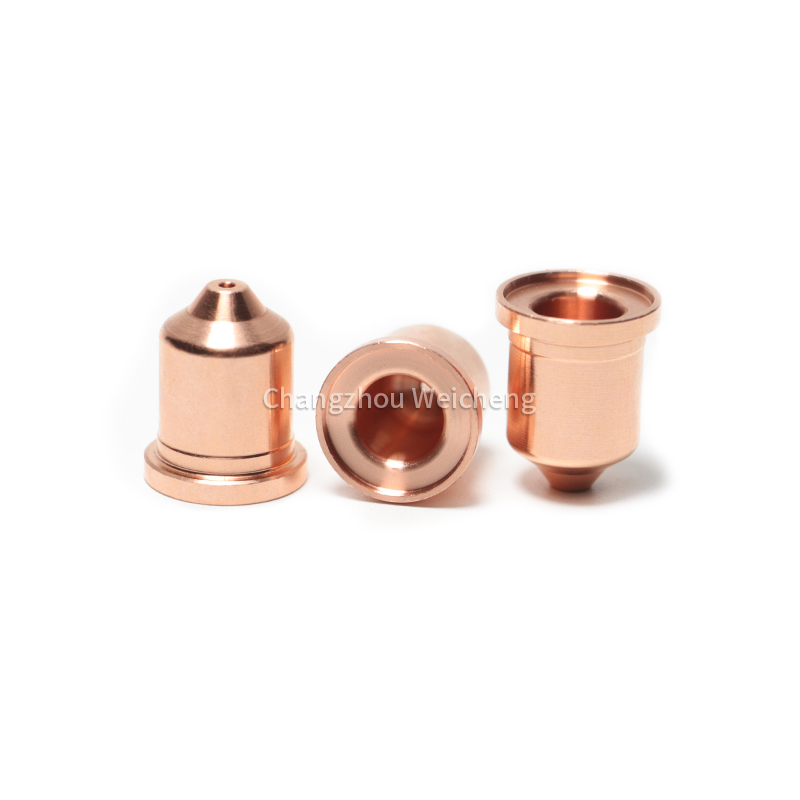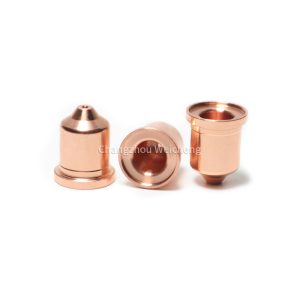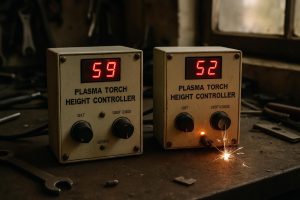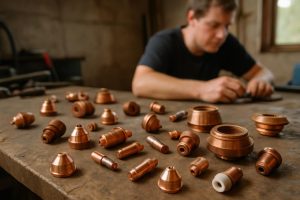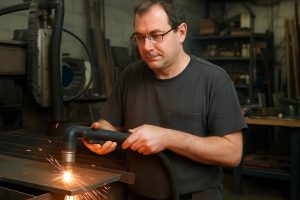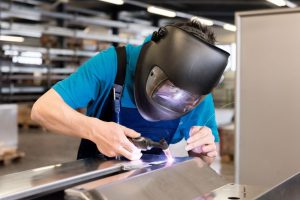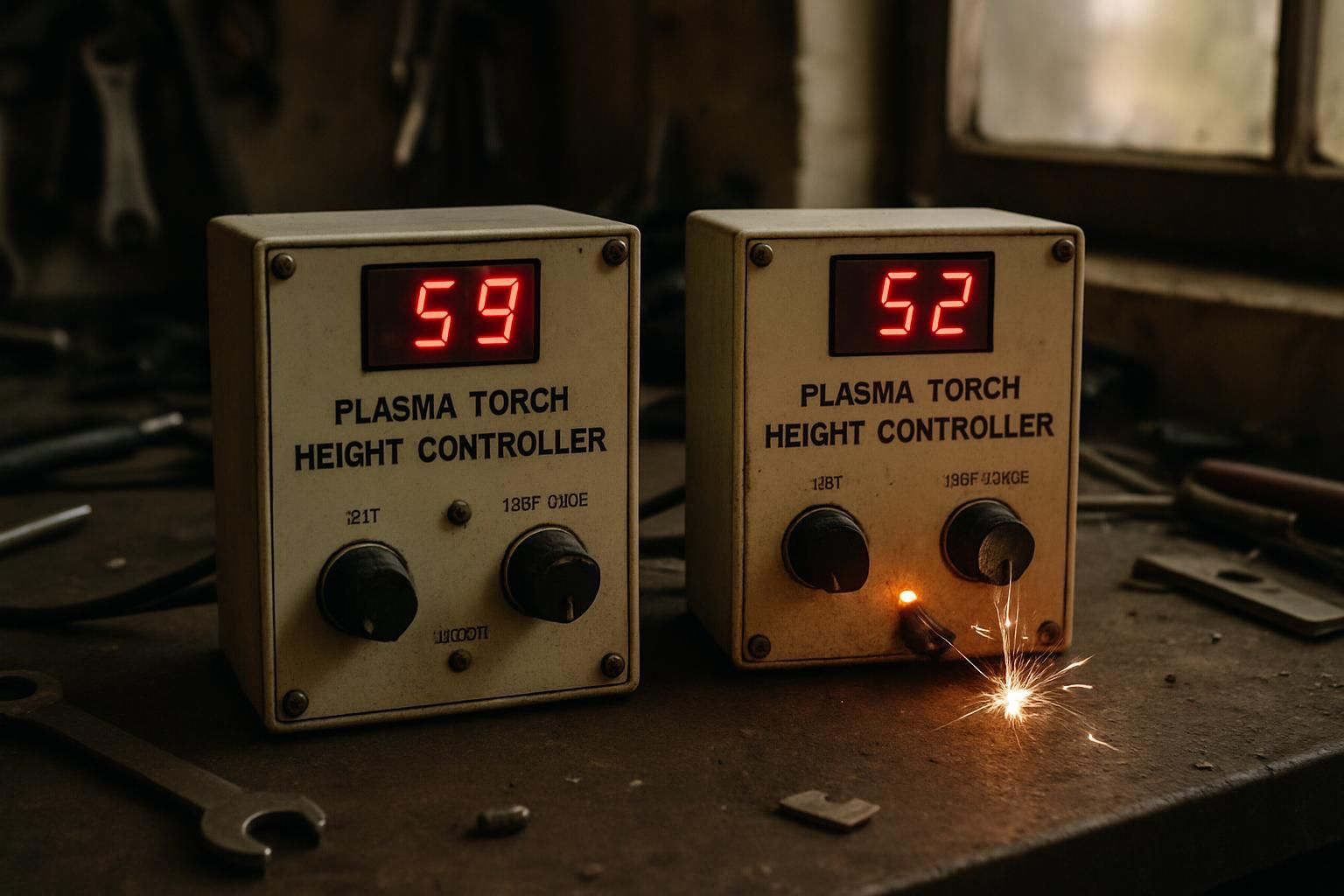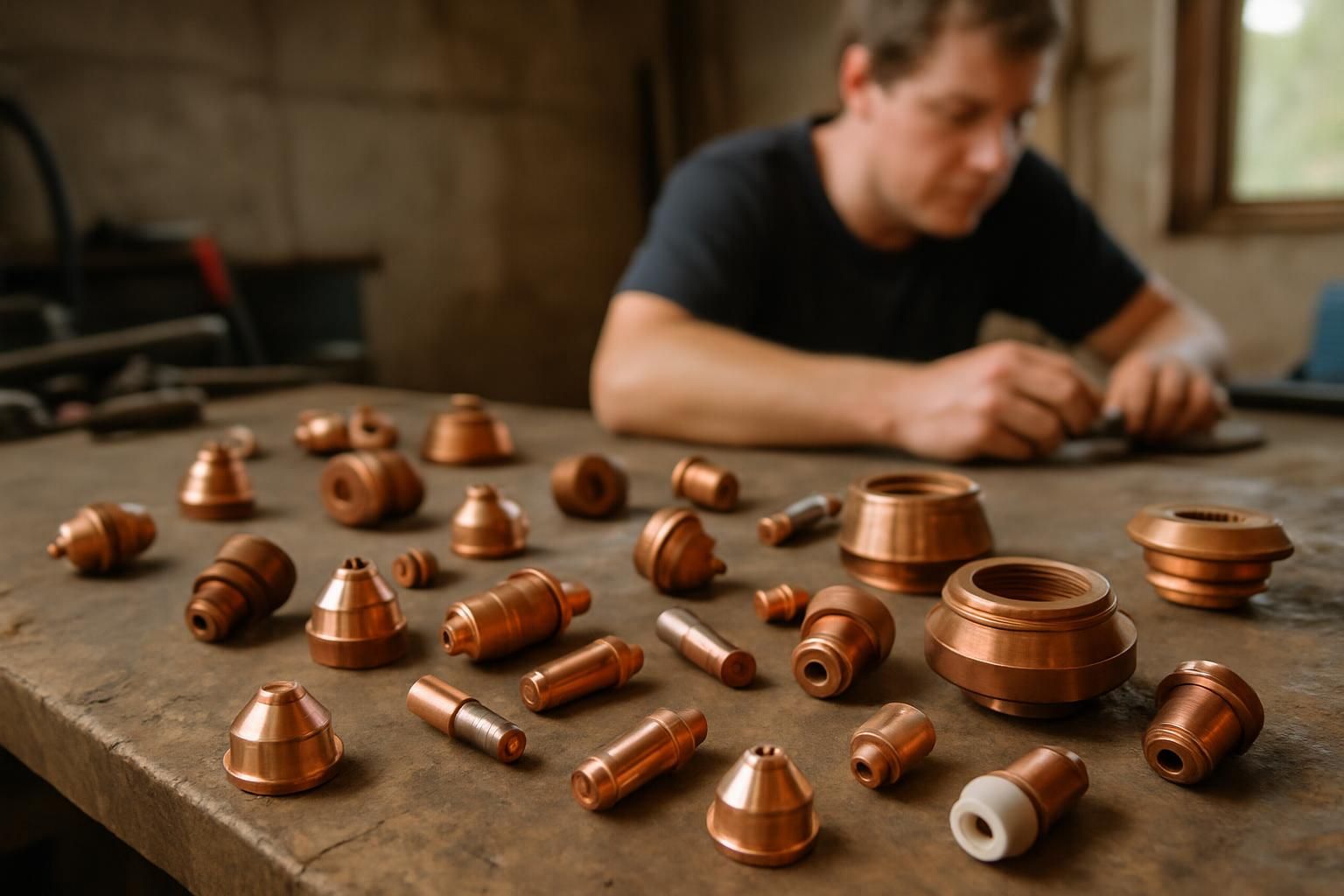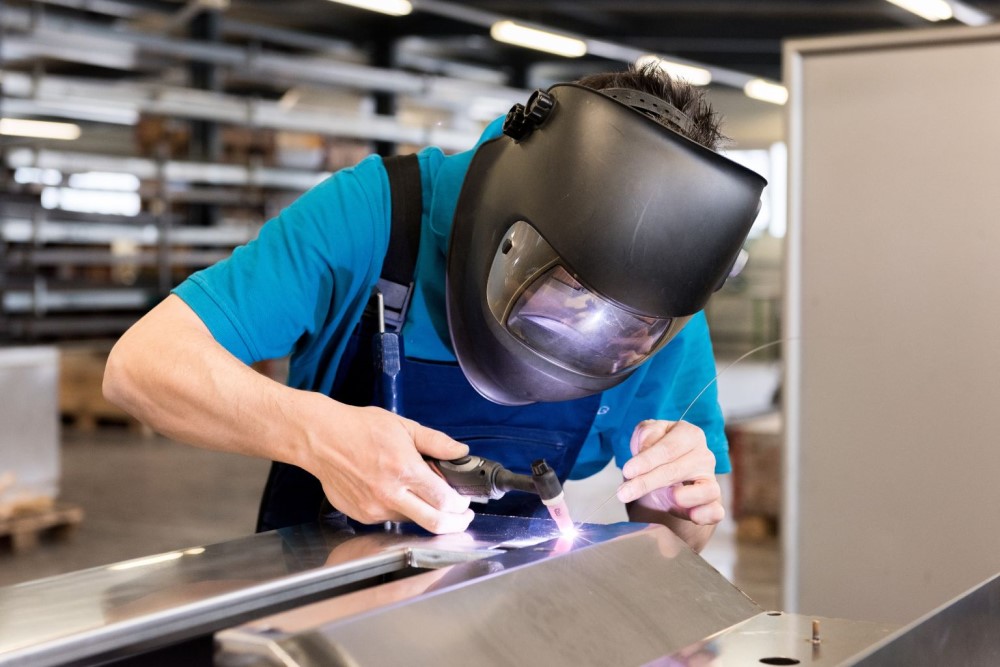Plasma Nozzle Basics What It Is and Why It Matters
A plasma nozzle is a crucial part of your plasma cutter consumables. Think of it as the small but mighty component that focuses the plasma arc to slice through metal with precision. Without a well-functioning nozzle, your cuts can suffer from poor quality, slower speed, and even safety risks.
The Anatomy of a Plasma Nozzle
At its core, a plasma nozzle features a tiny orifice that controls the shape and intensity of the plasma arc. This orifice size directly affects how clean and accurate your cuts are. Most nozzles are made from durable materials like copper with special coatings to withstand extreme heat and wear.
How Nozzles Impact Cut Quality Speed and Safety
Nozzles play a vital role in:
- Cut Quality: A proper nozzle ensures a steady, focused arc, resulting in smooth, dross-free cuts.
- Speed: The right nozzle size matches your cutter’s amperage, allowing faster cutting without sacrificing precision.
- Safety: A worn or wrong nozzle can cause unstable arcs, increasing the chance of splatter and torch damage.
Common Myths Debunked
Let’s clear up some plasma nozzle myths:
- Bigger Nozzle Means Better Cut: Not true. The nozzle orifice size must match your amperage and material thickness for optimal performance.
- All Nozzles Are the Same: No. Specialty nozzles exist for different cutting techniques like drag cutting or fine cutting.
- Nozzle Wear Doesn’t Affect Cuts: Actually, worn nozzles reduce cut quality and can damage your torch over time.
Understanding these basics sets the stage for choosing the right plasma nozzle and getting the most from your plasma cutting setup.
Types of Plasma Nozzles Matching the Right One to Your Project

Choosing the right plasma nozzle is key to getting clean cuts and smooth operation. There are mainly standard nozzles and specialty nozzles. Standard nozzles work well for most common cutting jobs, while specialty nozzles like drag cutting nozzles or fine cut plasma nozzles are designed for specific tasks or materials.
Standard vs Specialty Nozzles
- Standard nozzles are your everyday go-to. They fit most plasma cutters and handle a wide range of materials and thicknesses.
- Specialty nozzles include options like fine-cut nozzles for detailed work, or drag cutting nozzles that touch the material for better control on thin metals.
Nozzle Sizing Guide by Amperage and Material Thickness
Picking the right size nozzle or nozzle orifice size depends on your cutter’s amperage and the thickness of the metal:
| Amperage (Amps) | Material Thickness | Typical Nozzle Size |
|---|---|---|
| 20-30 | up to 1/8 inch | Small orifice |
| 40-50 | 1/8 to 1/4 inch | Medium orifice |
| 60+ | over 1/4 inch | Larger orifice |
Matching your nozzle to the amperage ensures the plasma arc stays stable and cuts efficiently.
Gas and Pressure Considerations for Optimal Performance
Gas flow and pressure significantly affect how your nozzle performs. Different nozzles might require specific gases like air, nitrogen, or oxygen. Always check your plasma cutter’s specs and adjust pressure settings accordingly:
- Too low pressure can cause an unstable arc.
- Too high pressure wears out the nozzle faster and lowers cut quality.
Balancing gas type and pressure helps maximize your nozzle’s life and delivers cleaner cuts every time.
How to Choose the Perfect Plasma Nozzle for Your Setup
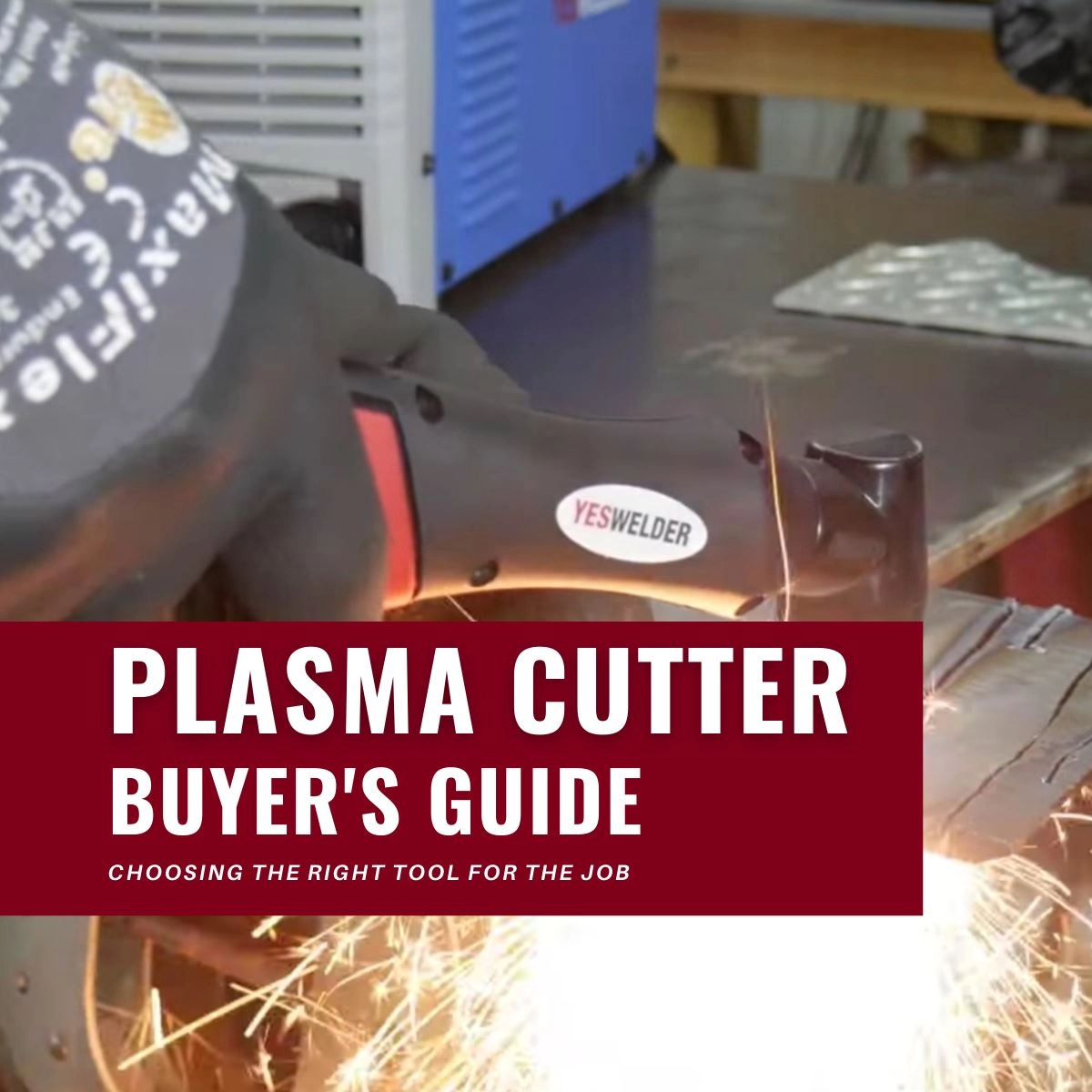
Choosing the right plasma nozzle makes a big difference in your cut quality, speed, and overall experience. Here’s how to get it right:
Assess Your Plasma Cutter Compatibility
- Match the nozzle orifice size to your plasma cutter’s amperage. Using a nozzle that’s too big or too small can cause poor cuts or damage.
- Check your cutter’s recommended consumables list. Stick with parts designed for your model to avoid issues.
- Consider gas type and pressure specs. The nozzle has to work well with your setup’s air or gas flow for optimal results.
Balance Cut Quality vs Production Speed
- If you need fine cut plasma nozzles for detailed work, aim for smaller orifice sizes and precise gas flow.
- For faster jobs with thicker metal, go for nozzles built to handle higher amperage and longer duty cycles.
- Remember, better cut quality can mean slower speeds, so decide what matters most for your projects.
Budget vs Durability Investing in Quality Consumables
- It might be tempting to save with cheaper nozzles, but lower-quality parts wear out faster and can hurt your plasma cutter.
- Investing in reliable brands and durable consumables saves money long-term by reducing downtime and part replacements.
- Keep an eye on plasma cutter consumables like nozzles and swirl rings, as worn parts directly affect your cuts.
For a smooth start, check out this amperage matching guide to find the nozzle that fits your machine perfectly. Balancing budget with quality ensures you get consistent results without breaking the bank.
Step by Step Installation and Setup for Flawless Starts
Getting your plasma nozzle guide installed and set up right from the start makes all the difference. Here’s a straightforward way to get going without hassle.
Tools and Prep Checklist
Before you start, gather these essentials:
- Clean work gloves
- Replacement plasma nozzle and electrode
- Wrench or pliers (if needed for torch assembly)
- Safety glasses and protective gear
- Clean cloth for wiping parts
- Manufacturer’s manual for your plasma cutter model
Proper Torch Assembly and Initial Testing
- Turn off the plasma cutter and unplug it for safety.
- Remove the old nozzle and electrode—inspect the torch tip and body for damage.
- Install the new electrode first, making sure it seats firmly.
- Screw in the plasma nozzle guide properly without overtightening—it should fit snugly.
- Reattach the shield cup if your torch uses one.
- Power on the cutter and perform a quick test arc on scrap metal to check the spark and cut quality.
Fine Tuning Settings Amps Voltage and Height Control
- Amperage: Match your nozzle orifice size to the right amps (see your cutter’s amperage matching guide). Too high or too low amps can cause nozzle wear and poor cuts.
- Voltage: Most settings auto-adjust, but confirm your machine is running stable with the new nozzle installed.
- Torch Height Control: Keep the correct standoff distance between the nozzle and the material. Use height control accessories if available—this keeps cuts consistent and extends nozzle life.
Remember, proper setup means better cut quality, longer nozzle life, and fewer frustrations on the job. Don’t rush the process and always double-check your work before cutting.
Maintenance Mastery Extending Nozzle Life and Avoiding Downtime
Keeping your plasma nozzle in good shape is key to avoiding unexpected downtime and saving money on consumables. Here’s how I stay on top of daily maintenance and know exactly when to swap out worn nozzles.
Daily Cleaning Routines to Prevent Clogs and Wear
- Wipe down after each use: Remove any slag, dust, or metal particles from the nozzle with a clean cloth.
- Inspect the nozzle orifice size: Make sure there’s no buildup narrowing the opening, which can mess with the arc stability.
- Use compressed air: Blow out any debris inside the nozzle to keep the plasma arc clear and consistent.
- Check shielded plasma torch parts: Clean the shield and surrounding components regularly to avoid heat buildup and wear.
Signs of Wear and When to Replace
Knowing when to replace your nozzle can prevent bad cuts and torch damage:
- Irregular or uneven cuts: If your cut edges look rough or inconsistent, worn nozzles could be the cause.
- Excessive dross buildup: A lot of slag sticking to the cut area often means nozzle wear.
- Visible damage to the tip: Chips, cracks, or an enlarged orifice size suggest it’s time for a replacement.
- Overheating or unstable arc: If the arc flickers or the torch gets hotter than usual, check your nozzle condition.
Pro Tips for Longevity
- Match nozzle size with amperage: Using the right nozzle for your plasma cutter consumables amps keeps the arc efficient and extends nozzle life.
- Avoid drag cutting unless using drag cutting nozzles: Drag cutting with the wrong nozzle speeds up wear.
- Keep gas pressure optimized: Correct gas flow prevents overheating and premature nozzle wear.
- Rotate between multiple nozzles: This helps evenly distribute wear when working on big projects.
- Store nozzles in clean, dry places: Dust and moisture can cause corrosion, cutting the lifespan short.
By following these simple but effective steps, you get the most out of each plasma nozzle, keep your cuts clean, and reduce costly downtime.
Troubleshooting Common Plasma Nozzle Issues
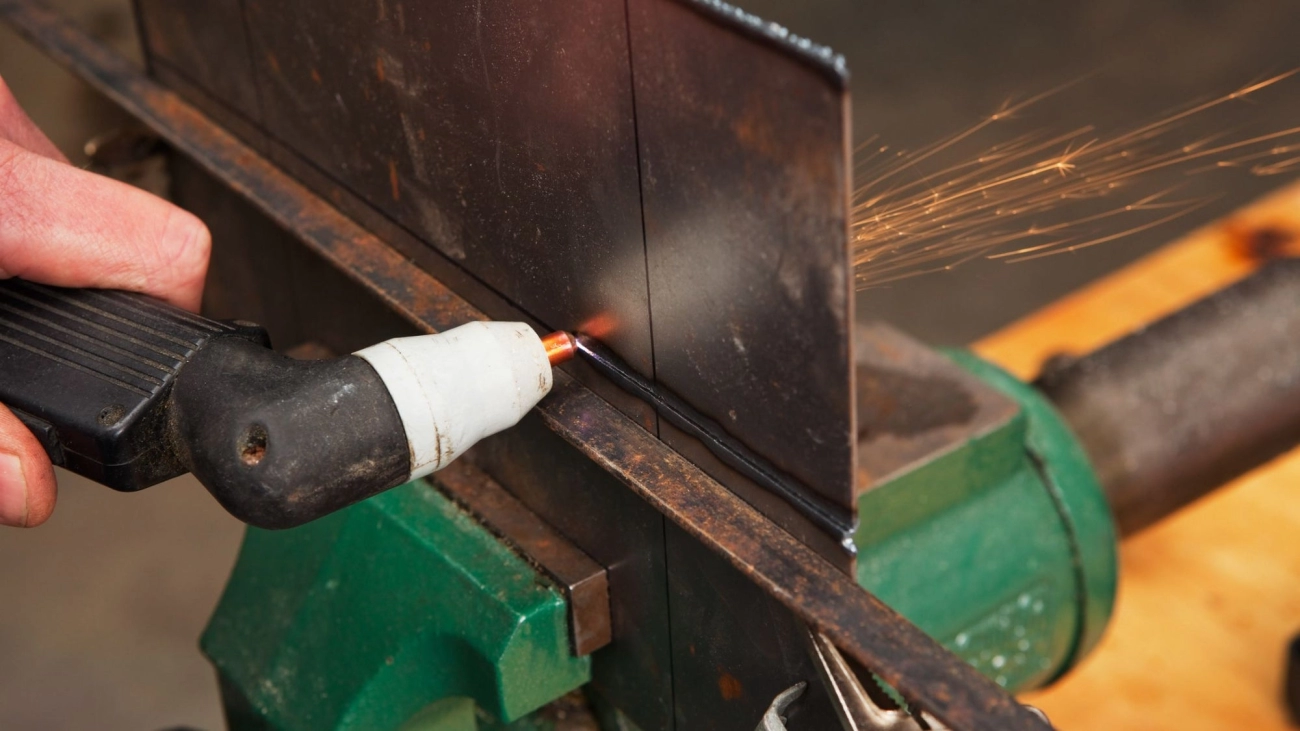
Running into problems with your plasma nozzle? It happens, but most issues are easy to spot and fix when you know what to look for.
Diagnosing Overheating and Poor Arc Stability
- Overheating usually means your nozzle orifice size is off or gas flow isn’t right. Check that you’re using the right nozzle for your cutter’s amperage and material thickness. Too high or too low gas pressure can also cause the nozzle to heat up quickly.
- Poor arc stability can come from worn nozzles, dirty consumables, or incorrect torch assembly. Look for signs of nozzle wear like uneven edges or excessive carbon buildup. Cleaning or replacing the nozzle often restores a steady arc.
Fixing Dross Bevels and Incomplete Cuts
- Dross buildup along the cut often points to a nozzle that’s either worn or paired poorly with your cutting settings. Make sure your gas pressure, travel speed, and torch height are dialed in.
- Bevel cuts or incomplete cuts usually happen when the nozzle isn’t positioned correctly or if you’re using the wrong nozzle type for the job—drag cutting nozzles vs fine cut plasma nozzles make a big difference here.
- Double-check your amperage matching based on the metal thickness. Using nozzles designed for different amp ranges can cause partial penetration or sloppy edges.
When to Call in the Pros
If you keep running into the same problems after swapping consumables and tweaking settings, it might be time for professional help. Persistent issues with arc stability, nozzle overheating, or inconsistent cuts can signal deeper torch or machine problems that need expert attention.
For more detailed help on troubleshooting and maintenance, check out our plasma cutter nozzle guide and troubleshooting tips page.
Advanced Techniques Elevating Your Cuts with Nozzle Optimization
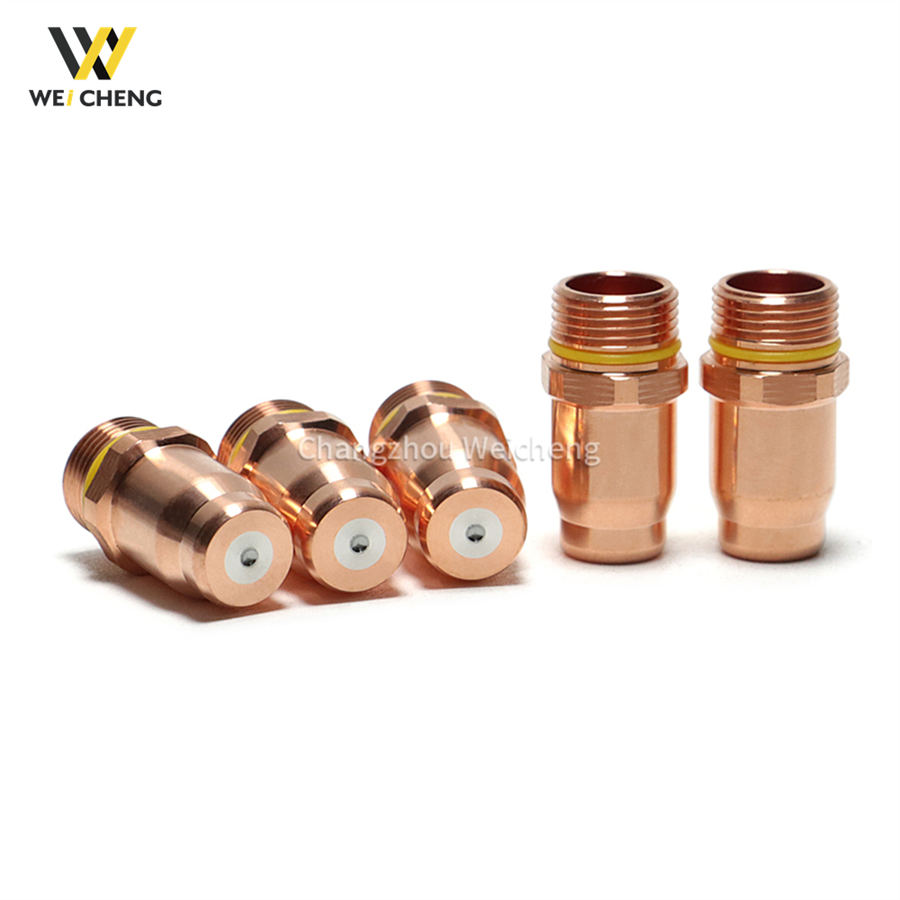
When it comes to getting the best out of your plasma nozzle guide, small changes can make a big difference in cut quality and speed. Optimizing your nozzle setup isn’t just about choosing the right piece — it’s about how you use it.
Drag Cutting vs Standoff Nozzles Which One Works Better
- Drag Cutting Nozzles: These nozzles let you literally drag the torch along the material, improving control and precision. Great for quick, clean cuts on thinner metals. If you want smoother edges with less dross, drag nozzles are your go-to.
- Standoff Cutting Nozzles: These keep a set distance from the material. Perfect for thicker metals or when using CNC machines, as they help maintain consistent arc stability but may sacrifice some edge quality compared to drag cutting.
Choosing between these depends on the job. For fine cut plasma nozzles that demand high detail, drag cutting often wins. For speed and heavy-duty work, standoff nozzles do better.
Adding Accessories for Better Consistency
Using height controls and water tables can seriously upgrade your plasma cutting setup:
- Height Controls: Automatically adjust your torch’s distance from the metal, ensuring consistent cuts and longer nozzle life. This cuts down on nozzle wear troubleshooting.
- Water Tables: Reduce smoke, splatter, and dross by cooling the material and catching slag before it redeposits. This helps keep your nozzle orifice clean and extends its life.
Integrating these tools helps you maintain plasma arc stability and improves both cut quality and safety.
Future Proofing With Emerging Nozzle Technology
The plasma cutter consumables market is always evolving. New tech focuses on better materials and designs for longer life and improved cut quality. Here’s what to keep an eye on:
- Advanced Coatings: Some nozzles now feature heat-resistant coatings that reduce wear and overheating.
- Smart Nozzles: These come with sensors to monitor torch conditions, helping you catch issues like overheating or poor arc stability early.
- Custom Orifice Designs: New shapes and sizes tailored to specific gases and material types for maximum efficiency.
Staying updated with these innovations saves you money in the long run and keeps your plasma cutting operation running smoothly.
Carefully optimizing your plasma nozzle and adding the right accessories makes a huge difference if you want clean cuts and fewer headaches. Whether you lean toward drag cutting nozzles or standoff setups, pairing them with good height controls or water tables pushes your results to the next level. And don’t forget to watch for emerging nozzle tech — it’s worth investing in to future-proof your setup.
Sourcing Reliable Plasma Nozzles Why Plasmacutting Factory Stands Out
Finding dependable plasma nozzles can make or break your cutting projects. That’s why I always recommend going with trusted sources like Plasmacutting Factory. They specialize in quality plasma cutter consumables designed specifically for the U.S. market, ensuring every nozzle fits right, lasts longer, and keeps your cuts clean.
What to Look for in a Consumable Manufacturer
When picking a supplier, focus on these key points:
- Consistent Quality: Nozzles should have uniform nozzle orifice sizes to maintain stable plasma arc performance.
- Compatibility: They must match your plasma cutter’s amperage and torch type.
- Durability: Look for materials that resist wear and reduce clogging.
- Customer Support: Responsive service helps when you need quick replacements or troubleshooting.
- Affordable Pricing: Quality doesn’t always mean expensive—balance cost with long-term value.
Our Top Recommendations
- Plasmacutting Factory: Known for offering a wide range of nozzles, including fine cut plasma nozzles and those suited for drag cutting nozzles setups.
- Hypertherm Replacement Parts: If you use Hypertherm tools, their OEM nozzles are a safe bet.
- Aftermarket Specialists: Brands focused on high-quality plasma consumables at competitive prices can be worth trying.
Bulk Buying Guide and Cost Saving Hacks
- Buy in Packs: Stock up on nozzles that match your amperage and material needs to avoid downtime.
- Mix Standard and Specialty: Keep some standard nozzles handy for everyday jobs and specialty ones for tougher cuts.
- Watch Your Usage: Track nozzle wear to replace only when necessary — avoid throwing away parts too early.
- Partner with Suppliers: Establish accounts with vendors like Plasmacutting Factory to unlock discounts and faster shipping.
By choosing the right plasma nozzle supplier and following these tips, you’ll save money, boost cutting performance, and reduce interruptions on the job.

